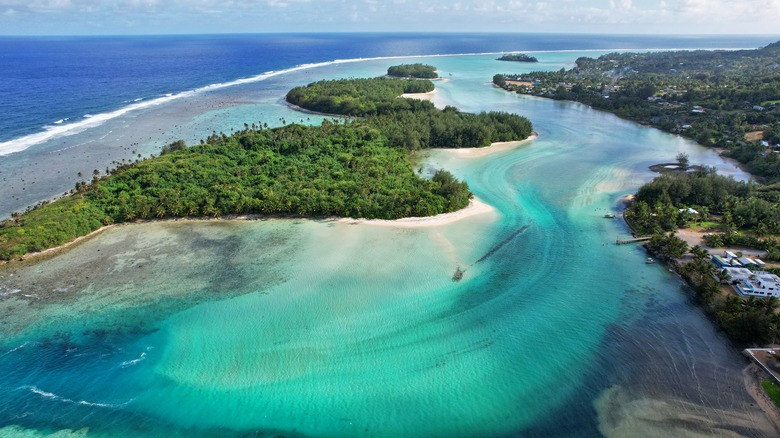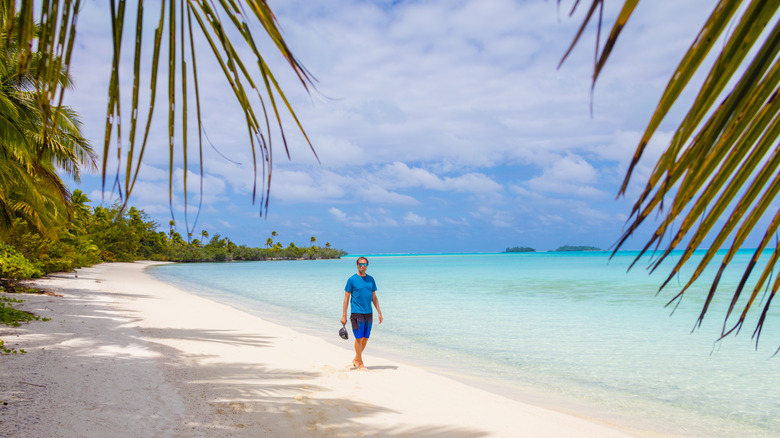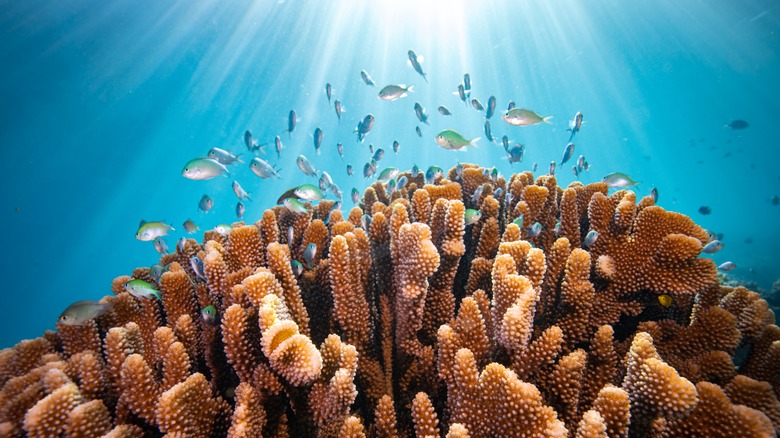The Polynesian 'Danger Island' Offers A Tropical Escape With Dazzling Turquoise Water
Imagine a tropical getaway where the beaches aren't lined with resorts, and the only crowds are schools of fish darting through dazzling turquoise waters. If you crave adventure far from the usual tourist trails, Pukapuka, also known as Danger Island, beckons with its sirens song. In a far northern group of the Cook Islands, this remote paradise in the South Pacific is a coral haven of three islets: Wale, Motu Ko, and Motu Kotava. With a land area roughly one-third the size of Central Park, it's a speck in the ocean, halfway between New Zealand and Hawaii and closer to Samoa than it's own capital of Rarotonga.
Pukapuka's history is as captivating as its scenery. Polynesians have called it home for centuries. Their culture is shaped by a legendary survival story: 15 ancestors reportedly rebuilt their society after a devastating tsunami around 300 years ago. In 1765, an English navigator named John Byron dubbed it "Isle of Danger" after treacherous reefs and high surf thwarted his landing upon it. Today, reaching Pukapuka remains a challenge. From Rarotonga, about 800 miles away, visitors face infrequent flights which take about 4.5 hours, or rare cargo ships that depart Rarotonga every 2.5 months. Private charters cut travel time and require planning but are your best bet, other than signing up for a tour of the northern islands. While there isn't a bad time to visit, April to November is the driest, with warm, sunny days and the lowest humidity. Intrepid adventurers are drawn to Pukapuka's unspoiled beauty, vibrant marine life, and a chance to immerse themselves in a culture untouched by mass tourism.
Cook Islands life in Pukapuka
Pukapuka's three islets form a loose triangle around a shimmering lagoon. Wale, the northern hook-shaped main island, hosts about 400 residents across three villages: Ngake, Roto, and Yato. Motu Ko, a horseshoe-shaped islet to the southeast, and the smaller Motu Kotava to the southwest are uninhabited and serve as communal plantations for taro, pandanus, and coconuts. Narrow sandbanks and cays connect Motu Wale and Motu Ko at low tide, creating pathways over the reef that locals navigate with ease.
Life on Wale revolves around community and the sea. A strong matriarchal system underpins daily routines, with women playing key roles in decision-making. Villages pulse with shared activities such as singing, dancing, and sports like kirikiti, a lively type of cricket. The ra'ui system, an ancient Polynesian tradition of protecting certain areas of land to manage resources, governs fishing and harvesting to sustain the island and lagoon's natural bounty. Homes are modest, often thatched huts called Kikau, blending into the palm-fringed landscape. Pukapuka's isolation has preserved its distinct language and customs, setting it apart even from other islands across the country. Visitors can find a rhythm of simplicity: tending crops, fishing in the ocean, and communal gatherings in the evenings under unpolluted star-lit skies. This just might be one of the most Instagrammable places in the world.
Things to do in Pukapuka
Pukapuka's draw lies in its raw, crowd-free beauty and opportunities to connect with nature and local culture. The lagoon, a jewel within the atoll's triangle, is a postcard-perfect place. It brims with parrot fish, bonito, and vibrant coral reefs. Locals with small boats eagerly guide visitors to the reef's edge for brilliant fishing or snorkeling. Due to the ra'ui system, the biodiversity here is incredible and this island paradise is great for snorkeling. Anglers can hook yellowfin tuna, mahi-mahi, or wahoo, which can later be savored with traditional methods of cooking over hot stones or marinated in coconut cream. At low tide, visitors can walk the atoll's rim from Wale to Motu Ko, passing a small shipwreck while gazing across the lagoon's aquamarine expanse.
Visitors can take a boat to nearby Motu Kotava, a bird sanctuary where seabirds nest amidst windswept sandy shores. For some serenity, visitors can visit Toka, a small and tranquil sandbank just beyond the lagoon, which is perfect for soaking in the Pacific solitude. Join in on a kirikiti match to witness the island's passion for this high-energy sport. Sample taro, a local stapled prized for its sweetness, often mashed or roasted at communal feasts. As the sun dips, settle on Wale's sandbank under swaying palms to watch sunsets gobble up the entire skyline. Pukapuka's challenges — its remoteness, limited flights, and basic amenities — are part of its charm, rewarding those who seek an authentic, unpolished escape in the natural wonders of the world.


